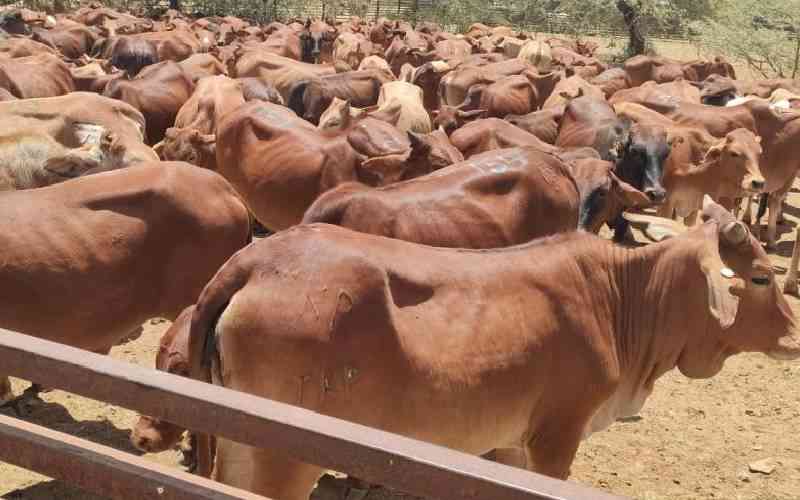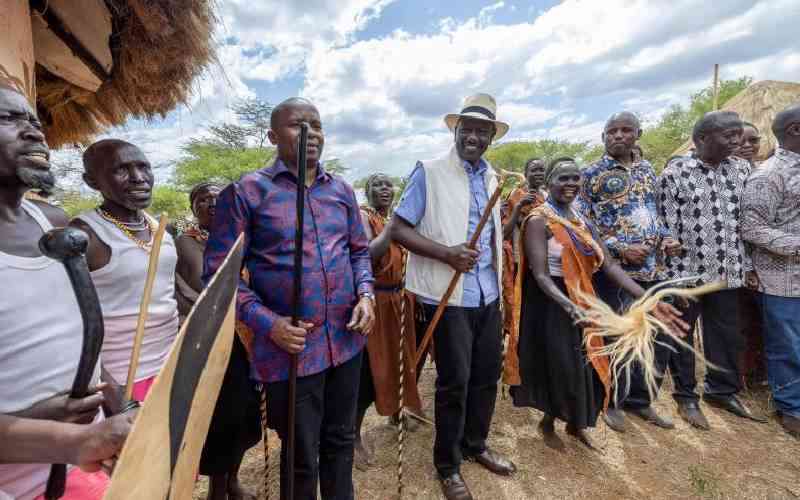
Pastures form the staple food for ruminants; the health and variety of pastures is directly proportionate to productivity and health of ruminants. Milk production is directly related to the quantity and quality of pasture they consume so is the rate of weight gain, growth rate and general well-being.
Pastures provide the main raw material for silage and hay making. How pastures are fed to animal can affect their health, growth and development. Pasture management is thus key in ruminant livestock production.
Farmers need to know the pasture variety and stocking rate of their paddocks or ranches for proper utilisation of their pastures and maximum livestock production.
Stocking rate; which is the number of animals per unit pasture is determined by among other factors quality of forage, animal numbers and production level and the predominant type of pasture.
While zero grazing is still being encouraged, a cut and carry system grazing is still applicable and practised where there is enough land. Ruminants can be tethered or allowed to graze within fenced paddocks with pastures consisting of grasses, legumes and shrubs.
Pasture varieties
Nutritive value, ease of propagation (planting), palatability (edibility), yield and rapidity of establishment are factors to consider when choosing pasture variety.
They can be grasses like napier, Rhodes and Kikuyu or fodder trees like calliandra and leucaena or legumes like desmodium and Lucerne. Legumes are rich in proteins and therefore of good nutritive value in lactating, growing and fattening stock.
They all have differing nutritive values which are advantageous or disadvantageous to animals or grazing option chosen. Fodder trees like calliandra and leucaena can be browsed by goats poor at grazing but may be out of reach for cows and must thus be harvested and fed.
Napier can grow up to 7 metres, is leafy, better utilised as a cut and carry feed, is digestible and should never be grazed for better regrowth and utility. It has the highest production potential of all grasses. It is drought tolerant and propagated through stem cuttings. Calliandra is a leguminous shrub that can grow up to seven metres and is best utilised as a cut and carry system of feeding in a dairy or beef enterprise. Rhodes grass is easy to establish and is suited for a variety of soils and moderately resistant to drought.
Lucerne is known to cause bloat and animals shouldn’t be allowed to graze on it but it is suitable for silage production. Fresh calliandra leaves are a delicacy to ruminants and are rich in proteins; calliandra tree can produce fodder for more than ten years. It greatly increases milk production and can also be fed to goats, rabbits and poultry.
There are several grazing options that can be adopted to these pastures by farmers as follows:
Rotational grazing
As the name suggests pastures are delineated into portions. Cattle are allowed to graze in one portion at a time as pasture and moved to another portion to allow for the pasture to regrow. This grazing method controls internal and external parasites by cutting their life cycle and it also ensure better utilisation of pastures. Nonetheless rotational grazing is relatively costly as the paddocks must be well fenced off.
Stay informed. Subscribe to our newsletter
Forward grazing
This is a form of rotational grazing whose main objective is prioritise access to the best pasture to animals with the highest nutritional requirement for example lactating or growing stock. The selected stock is allowed into the pasture earlier to graze then moved to yet another new paddock. They are followed by cattle with less nutritional needs for example breeding bulls who graze on the lower quality pasture left by the high nutritional group.
Continuous grazing
This is a common grazing method for many farmers; where animals are maintained on single pasture throughout the grazing season. Though relatively cheap; stocking densities in this system are low because pasture’s quality tends to deteriorate. It increases external parasite load due to continued animal presence in a given area.
Creep grazing
Creep grazing involves establishment of two pastures one of a higher quality and the other of a lower quality. Calves which require a great deal of nutrition are allowed into the higher quality pasture while the rest are fed on the lower quality pasture.
Strip grazing
This method is common in developed countries or large farms and is aimed at ensuring effective utilisation of feeds. It is labour intensive and utilises an movable fence (in most cases an electric fence) ahead and behind grazing animals thus the name strip grazing. The fence is moved only after a given strip has been thoroughly grazed.
- The writer is a Veterinary Surgeon working as a Communication Officer for the Kenya Tsetse and Trypanosomiasis Eradication Council –KENTTEC
 The Standard Group Plc is a
multi-media organization with investments in media platforms spanning newspaper
print operations, television, radio broadcasting, digital and online services. The
Standard Group is recognized as a leading multi-media house in Kenya with a key
influence in matters of national and international interest.
The Standard Group Plc is a
multi-media organization with investments in media platforms spanning newspaper
print operations, television, radio broadcasting, digital and online services. The
Standard Group is recognized as a leading multi-media house in Kenya with a key
influence in matters of national and international interest.
 The Standard Group Plc is a
multi-media organization with investments in media platforms spanning newspaper
print operations, television, radio broadcasting, digital and online services. The
Standard Group is recognized as a leading multi-media house in Kenya with a key
influence in matters of national and international interest.
The Standard Group Plc is a
multi-media organization with investments in media platforms spanning newspaper
print operations, television, radio broadcasting, digital and online services. The
Standard Group is recognized as a leading multi-media house in Kenya with a key
influence in matters of national and international interest.










